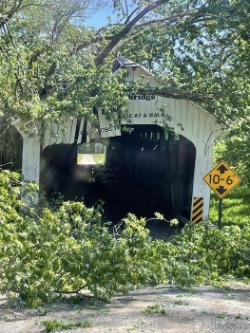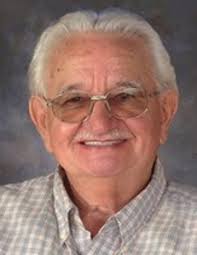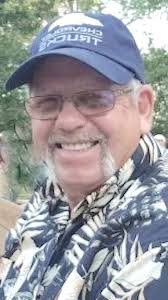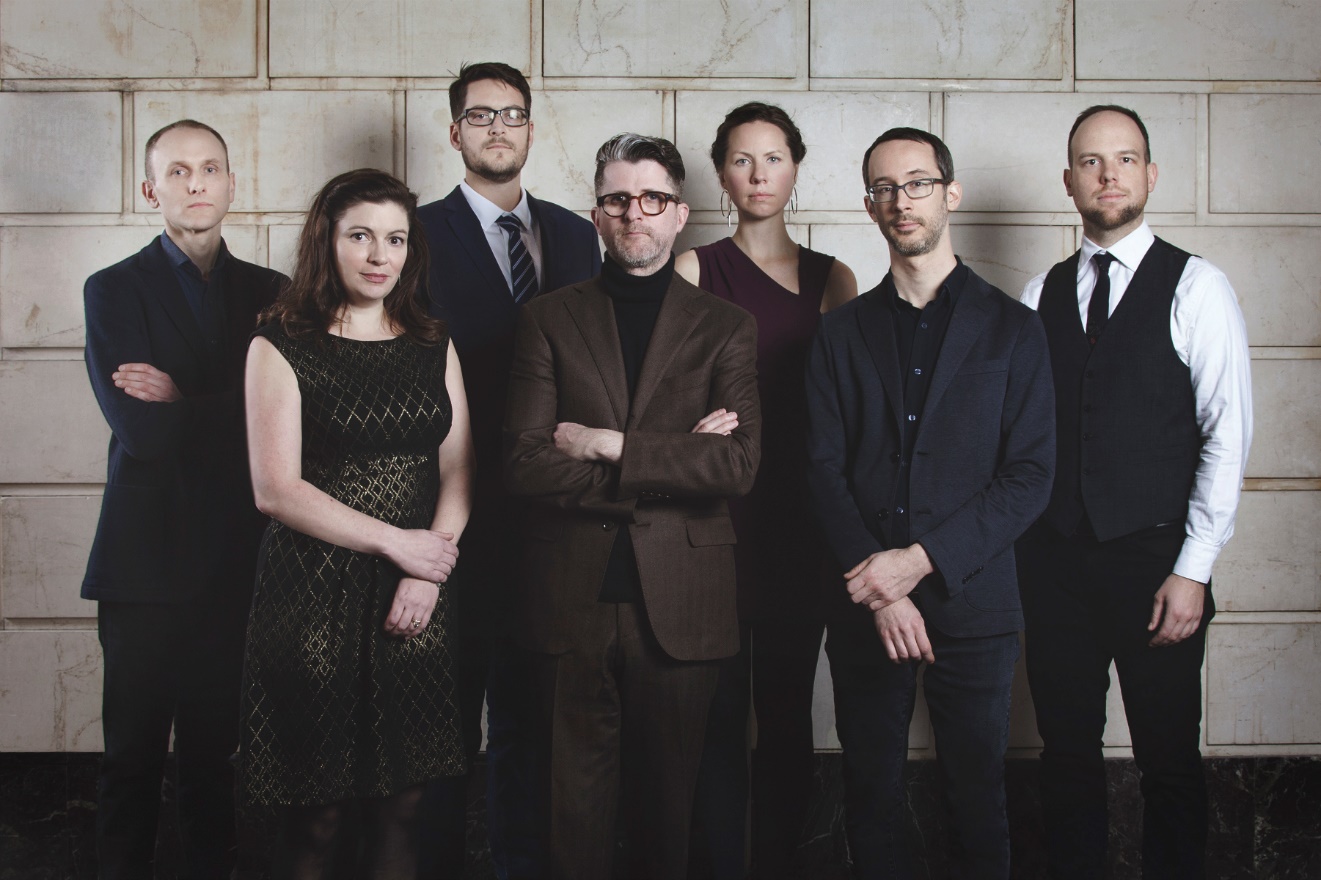A Parke County covered bridge was damaged and the intersection closed by a fallen tree.
Parke County Deputies, Lyford Fire Department, Parke County Highway and Parke County REMC responded to a tree that fell in Coxville.
The tree landed on the Roseville Covered Bridge and power lines.
C.R. 325 W. will be closed at this intersection until further notice.
The following Roseville Covered Bridge information and history below is found at www.coveredbridges.com .
Reference Code: #18, 14-61-09, 12-61-09, cw, 14-14N—8W
Size: 263 ft long +9’ +9’, 12’ 8
Truss: Burr Arch 2 span
Foundation: Cut sandstone
Original Cost: $10,000 or $5,725 + $7.00/cubic yard of concrete
Repair/Restoration History: Third bridge at this location, second bridge destroyed by arson fire April 9, 1910.
Bridge History: After the 1865 Roseville Bridge was burned in 1910, the Parke County Commissioners advertised to replace it with a concrete bridge. Apparently, the cost of a concrete bridge was prohibitive since it was replaced by the present covered bridge. (This seems like a good choice since the concrete bridge replacing the downstream Armiesburg Covered Bridge in 1917 collapsed in 1930 while the Roseville Bridge still stands.)
Jefferson P. Van Fossen received the contract to build the replacement bridge. The brothers J. P. and J. L. Van Fossen were associated with the county road department and were involved in constructing four or more Parke County covered bridges and foundations. J. P. Van Fossen was contracted the same year to build the Jessup Bridge. Witnesses from the construction site claim the on-site foreman was Joseph J. Daniels. J.J. Daniels built the 1865 covered bridge. He was 84 at the time the 1910 bridge was built.
A photograph of the nearly finished bridge shows the portal lettering. It credits J.P. Van Fossen Contractor, J. Brooks Builder. J.J. Daniels does not appear in the photo. The onsite witnesses didn’t remember Mr. Brooks, and later portal lettering photographs show J.J. Daniels listed as builder. The same photograph shows the sides of the bridge painted white rather than the now familiar barn red. The portal opening is the familiar "Daniels Arch".
Through the years photographs and postcards show the bridge painted red and brown. The portals have been red, brown, white, and knocked away. The transition from the J.J. Daniels arch to the present portal may have been assisted by the engraved sign boards being mounted too low, leading to the flattened arch on the latest repairs.
Another picture shows the first stone for the 1910 bridge loaded on a horse drawn wagon. Most covered bridges built after 1900 had poured concrete abutments. The new abutments were needed for a new bridge of a different length. Stone abutments are consistent with J.J. Daniels construction while the Van Fossens used poured concrete on their other bridges.
Doc Wheat practiced near the west bridge portal. He was a herbalist with a reputation of producing cures still unavailable to modern medicine. One of his eccentricities was his distrust of banks. After his death, his yard and house was riddled by treasure hunters searching for his Mason jars full of money.
By the 1950’s there were only a few homes left in Coxville and only one business, the Coxville Tavern. The tavern occupied a small log room with a stone fireplace and resembled a scene from the Snuffy Smith Comic Strip. Then Tex Terry retired from his acting career as a western villain. (He appeared in numerous movies with Roy Rogers and others.) His first retirement venture back home in Indiana was development of Mansfield.







